Rig tour: Pendulum
Peredur ap Gwynedd reveals the secret weapons behind his wall of sound

Introduction
Pendulum are a band that can play any festival they so desire. They could be face-to-face with an army of metalheads, shuddering the hallowed grounds of Castle Donington one night, and then staring at the fluorescent glare of Pyramid Stage ravers dancing 'til the sun comes up the next.
Which is exactly why guitarist Peredur ap Gwynedd – who has also performed with Faithless and Tinie Tempah – is someone that has a very specific set of requirements from the gear that travels around the world with him.
TG are invited into Pendulum’s South London HQ, where the Welsh axeman is putting the final touches to his rig before the electronic rockers fly out across the pond.
Don't Miss
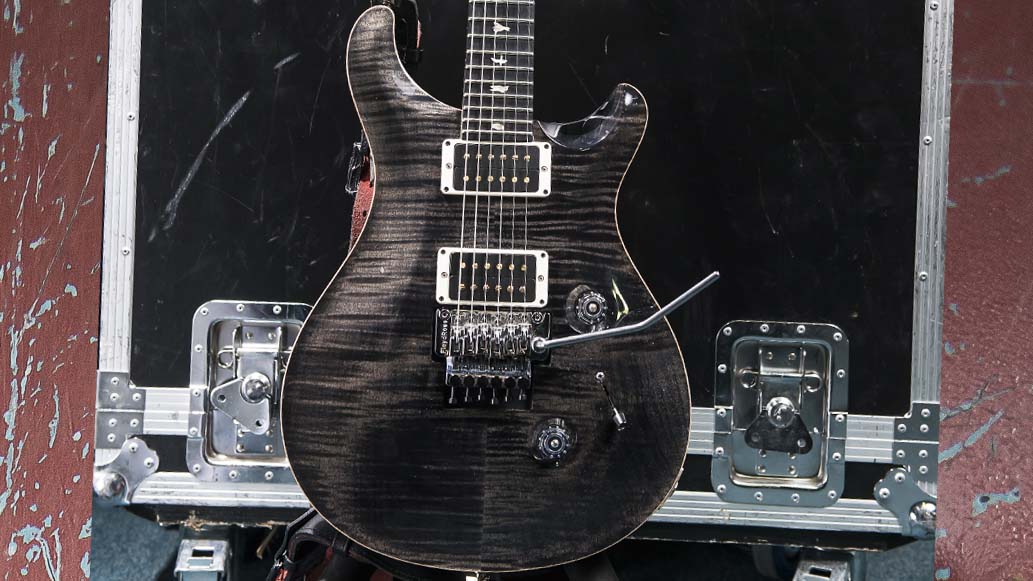
PRS Floyd Custom 24
“The first time I picked up a PRS, I was a young kid at one of those big guitar shows at Earls Court. It was either a Custom 22 or 24. I didn’t actually own one until last year, so it’s definitely been a long time coming!
“They have their own unique sound, which covers single-coil and humbucker stuff perfectly, yet keeps its own character. It’s not quite a Les Paul nor a Strat, so there’s a certain individuality and warmth that’s quite noticeable. My rig sounds much fatter now, I think.
I’ve always been a Floyd Rose fan; it’s an incredible piece of engineering that just works
“And I’ve always been a Floyd Rose fan; it’s an incredible piece of engineering that just works. I’ve been using them since I was young and I know that some people don’t get on with them, but I just do. They’re perfect in my eyes: you can do the old-school Strat thing if you want or whammy it right down and flap your strings! Kahlers are too flimsy for me; I’ve never been a fan. I prefer floating trems - they feel like a step on from a Strat.
“I’ve got an SE Floyd as well - over the last summer I used one while out on tour with Faithless. I don’t really care if SE stands for ‘student edition’; it just has these amazing sounds.”
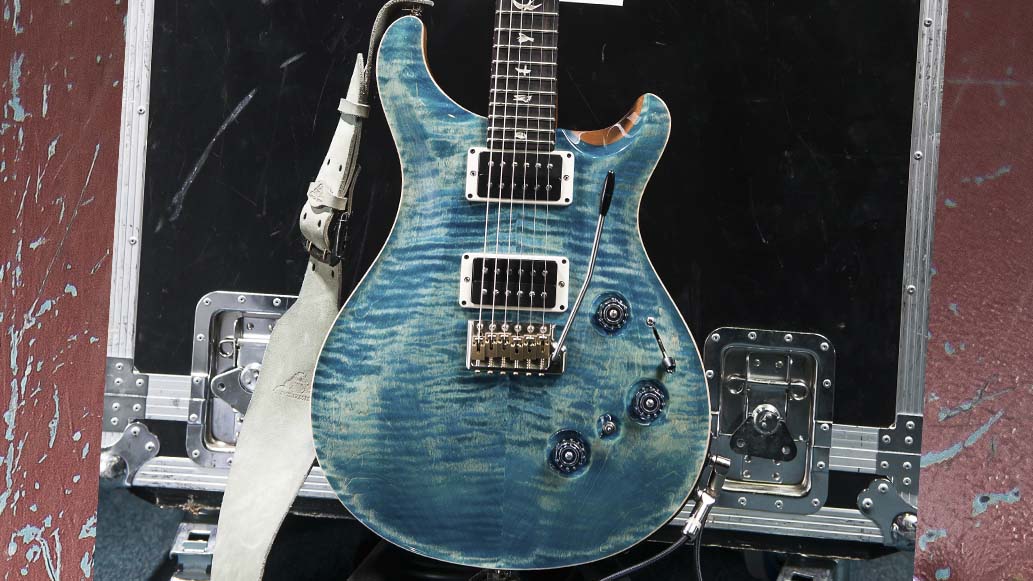
PRS P24
“This is totally stock; there’s nothing out of the ordinary – it’s a straight-off-the-shelf model. The reason I’ve got the P24 is, of course, the PRS/LR Baggs piezo system on the bridge – because in Pendulum we use a lot of acoustic sounds on their own or mixed up with electrics.
“We’ve only got one guitarist… so I play both! I can cover up to three different guitar parts at the same time and blending between them can make things sound massive!
“I love the Aqua Blue finish, too - there’s something about how much care they take in making guitars. If you see interviews with Paul Reed Smith, he’s just so enthusiastic about the whole thing. He’s a very clever man.”

Hughes & Kettner GrandMeister 36
“The GrandMeister has four different preamps – clean, crunch, lead and ultra – which covers everything. It has effects, too – there are four different types of modulation, digital reverb and delay!
“My old rig was much bigger, but this thing weighs eight kilos, plus it’s fully valve and totally MIDI-controllable with 128 presets. I can program changes to make the treble warble or whatever I want - it can do everything like a plug-in would.
This amp was the answer to my dreams; it has everything I need and works with MIDI. I can even control it on stage from an iPad!
“The output is 36 watts, but you can run it at half or even lower, plus there’s a DI out. I actually only have it on 18 watts; that’s plenty loud enough for me. I use a Hughes & Kettner cab with [Celestion] Vintage 30 speakers, which have always felt good to my ears. To be honest, I’ve always preferred the sound of a real amp - you can still tell the difference. So when I use a mix of the amp and synthetic sounds, I like the warmth it brings in.
“I’ve been with Hughes & Kettner for ages now - I was using a TubeMeister before they brought the GrandMeister out. This amp was the answer to my dreams; it has everything I need and works with MIDI. I can even control it on stage from an iPad!”
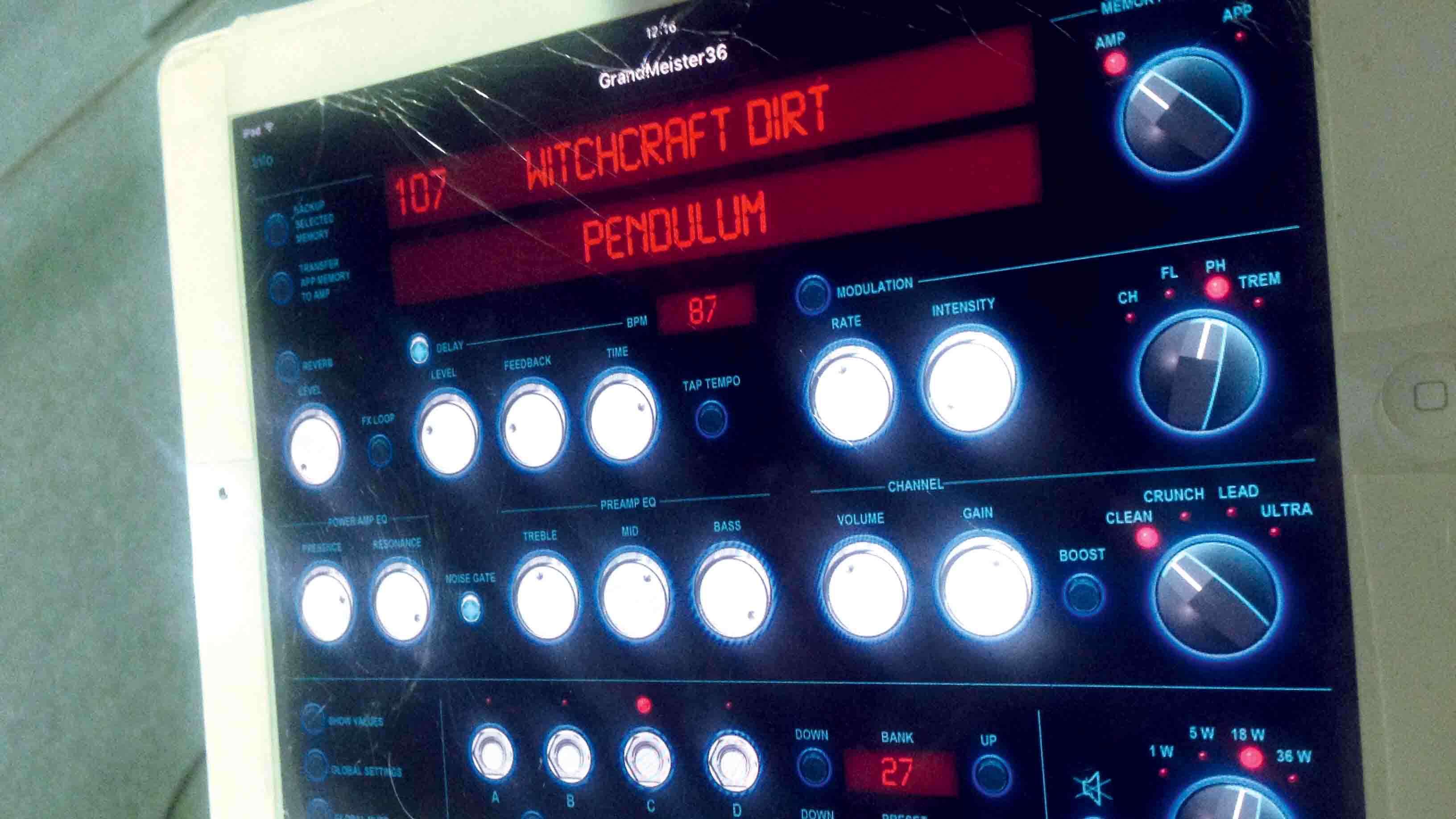
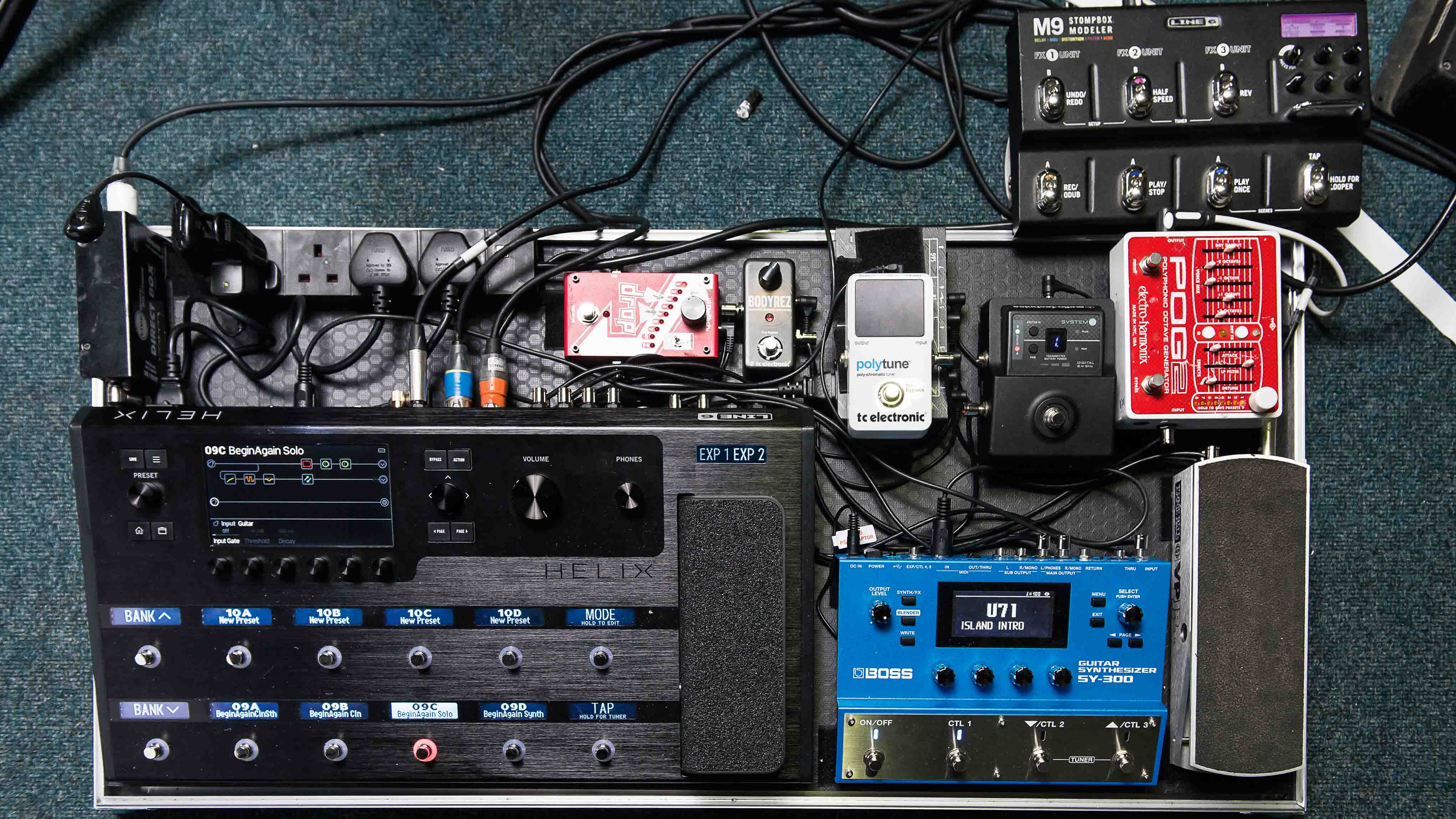
Pedalboard
Boss SY-300
“The best thing about this invention is that you don’t need one of those Roland Hex pickups. It uses the same technology as the [TC Electronic] PolyTune, picking up each individual string which separates everything – it’s polyphonic, like the [Electro-Harmonix] POG2.
“Guitar synth pedals have usually been monophonic, and somehow they managed to sort it out with this one. As soon as I saw it on the Chappers and The Captain YouTube channel – I think they’re very funny, by the way – I instantly knew it would be perfect for Pendulum. It’s pretty new on my pedalboard, I can’t wait to get using it more.
The fact you don’t need a special pickup really opens things up - those things are a pain in the arse!
“I’ll be bringing out the same rig for my Faithless sets, too, so I know this will come in handy. It tracks perfectly, and I can use my amp sound to double up underneath. You can get some amazing pads out of this thing. It’s fun for playing those Queen riffs with that trumpety sound, like Brian May’s leads on I Want To Break Free.
“It’s been a great investment already, but this is just the first version! I can’t wait to see what else they’re going to come back with for version two or three. The fact you don’t need a special pickup really opens things up - those things are a pain in the arse! You need to screw them in or maybe use double-sided sticky tape, then have a 13-pin lead, which they don’t make wireless units for… no-one wants that.”
Electro-Harmonix POG2
“Electro-Harmonix are very clever people! This pedal can create that 12-string effect, but it’s almost like 18-string because you can go two octaves above.
“I’ve always been a fan of making the guitar not sound like a guitar. Don’t get me wrong, I love how guitars sound, but I find myself drawn to more synthetic sounds. You can also use the POG as an octave pedal - I can go two octaves below to the point where the PA can’t handle it! It’s a very creative pedal and actually a great tool for songwriting.
“I’m not into using too many pedals at once. When you do that, your tone goes to hell – it sounds like a bloody mess. I’ll have a compressor, the POG, some delay and that’ll be it… I don’t like going beyond that.”
Line 6 M9
“There’s an effect on this Line 6 pedal called The Growler that I absolutely adore. The harder you drive it, the more the frequency overloads… which can transform your guitar into something close to an analogue synth. It’s really dynamic and responsive in that sense. I also use the pattern tremolo to cut my signal up as another special effect of sorts.”
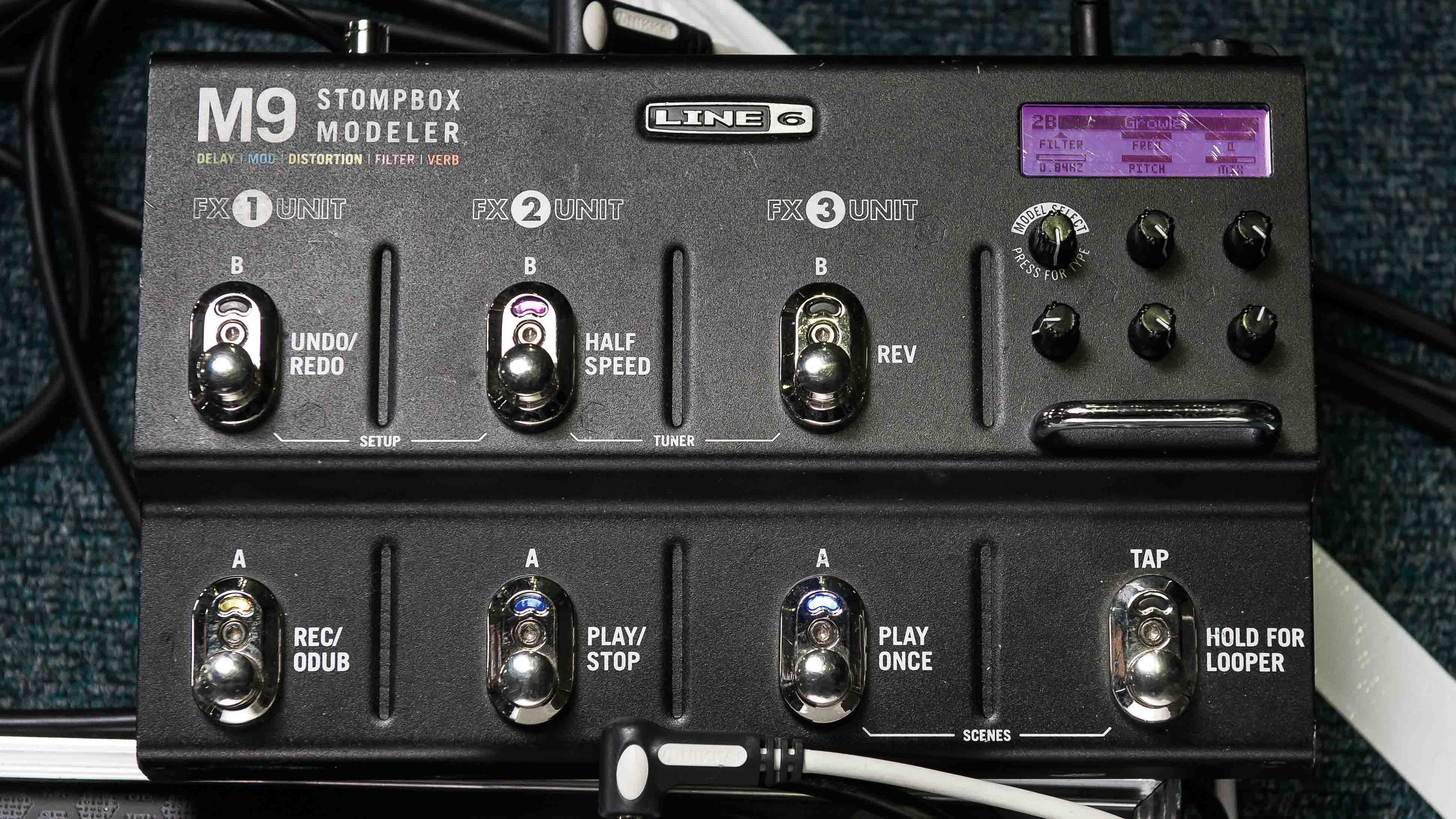
TC Electronic BodyRez
“My PRS P24 has a great piezo pickup in it, but it still sounds like a normal DI’d acoustic out front, and remember, even if you put a £10,000 Martin through a PA, that’s inevitably what it’ll sound like. So the TC Electronic BodyRez really helps me tap into more of that wooden body resonance. God knows how they do it: one knob and that’s it. It’ll make any piezo sound more like a mic’d-up acoustic, plus you still get to use your whammy bar!”
Ernie Ball VP JR 250K (Passive)
“If you only use the knob on your guitar to control your volume, it limits how much you’re able to do on the fretboard. These pedals are also very handy for changing guitars on stage as well - no-one wants to hear that jack lead clunk in between songs!
“The Ernie Ball feels like the most solid one I’ve come across, and I’ve tried a lot of them. The Morley is pretty good, too, but there’s no tuner out on it. I’ve got one of the miniature ones, which are great for pedalboard real estate!
“The Ernie Ball models are just solid… the pots are connected by string mechanisms, so you really can’t break them. I find the other ones that are physically connected are more prone to damage.”
DigiTech Drop
To tell you the truth, it didn’t replace anything on my pedalboard – it replaced four guitars!
“There are probably other similar pedals out there, but DigiTech knows exactly what its doing when it comes to bringing pitch up or down. I’ve had this one for about a year and, to tell you the truth, it didn’t replace anything on my pedalboard – it replaced four guitars!
“We tune to Eb, but in the past I’ve needed extra guitars for songs in D. The Drop shifts it for me and has cut my rig down from six instruments to two, which as you can imagine, makes life a lot easier!”
Audio-Technica System 10
“This is the wireless system that receives my signal. I’m actually wearing two packs on stage – one for acoustic and one for electric. The electric signal is split first – the guitar runs into the amp, as well as through the pedalboard then the PA. I can do whatever I want with either side of it.
“I can have a DigiTech Whammy going over a distorted chord behind it. So altogether, there’s the amp sound, the DI modelled sound and then the final acoustic out. Our sound engineer gets to blend it all together.”
Line 6 Helix
“The Helix is mind-boggling and I’ve only just begun to scratch the surface with what it can actually do. I saw a video of [British guitarist and demonstrator] Paul Hindmarsh explaining the idea behind it and as soon as I watched that, I realised I needed it in my life.
“With Pendulum, we have this massive crossover thing going on – we’ve done Download Festival three times, as well as the more mainstream ones. So I take different influences from different people, of course, but I like experimenting with whatever I can.
“It’s not a new thing: look at the weird sounds Robert Fripp was getting back in the day. But I do see this kind of equipment as part of a new generation. My rig is very much a work in progress – I’m making it up as I go along. I just watch YouTube clips thinking, ‘I want that and that!’ and put it all together to see what it sounds like. It’s pretty mental!”
TC Electronic PolyTune
“The PolyTune mark one is still the most important pedal I own out of them all! Being in tune is definitely important. Before you even get to the sound, you’ve gotta make sure your guitar’s in tune… otherwise you’ll sound like a dick!”
Don't Miss
Amit has been writing for titles like Total Guitar, MusicRadar and Guitar World for over a decade and counts Richie Kotzen, Guthrie Govan and Jeff Beck among his primary influences. He's interviewed everyone from Ozzy Osbourne and Lemmy to Slash and Jimmy Page, and once even traded solos with a member of Slayer on a track released internationally. As a session guitarist, he's played alongside members of Judas Priest and Uriah Heep in London ensemble Metalworks, as well as handling lead guitars for legends like Glen Matlock (Sex Pistols, The Faces) and Stu Hamm (Steve Vai, Joe Satriani, G3).
